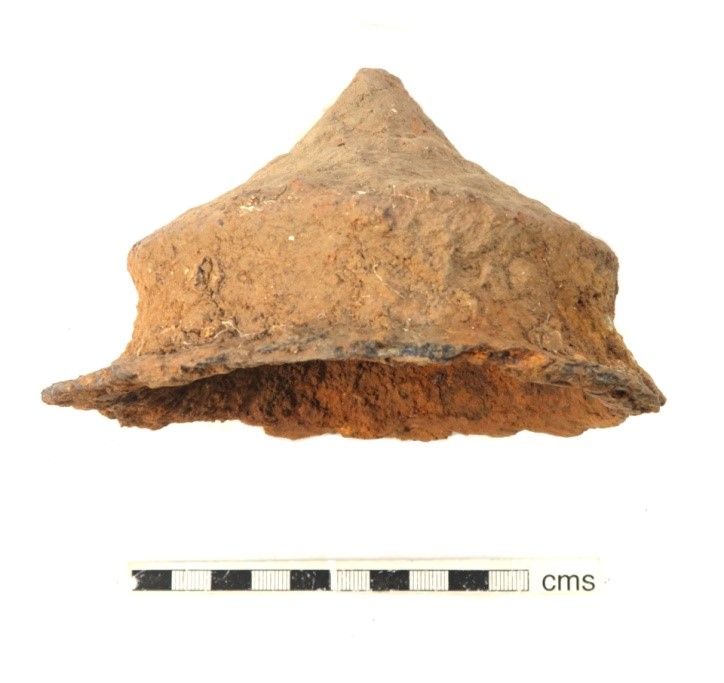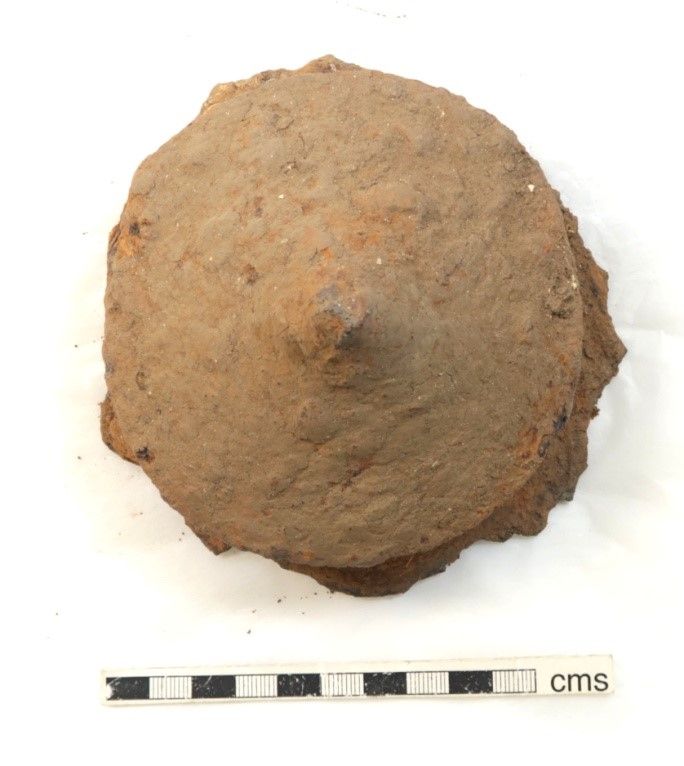As part of the Festival of Archaeology series on Culture on Call, Finds Liaison Officer Simon Maslin shares how an Anglo-Saxon cemetery site was discovered in Hampshire and the challenges archaeologists face when discoveries of such sites are made.
During February 2021 a metal detectorist discovered what appeared to be an in-situ furnished Anglo-Saxon inhumation at a site near Overton in Hampshire. This discovery followed a number of previous finds of contemporary metalwork, made over the last few years, which included distinctive shield bosses and other fittings dating to the 6th century AD. The find was immediately reported to the local Finds Liaison Officer at Hampshire Cultural Trust. As human remains were potentially involved (the disturbance of which is illegal), the detectorist was advised to cease activity at the site and advise the police and the county authorities of the find.


Discoveries of burials are not infrequently made in this age of popular metal detecting, although cemeteries from this period are actually very rare in Hampshire. These sites are potentially complex and always present a challenge to a correct archaeological response. Excavating burials is hugely expensive and time consuming, as well as being both legally problematic and ethically contentious, and the prevailing opinion is actually that they should be left alone, except where subject to imminent threat. In this case, the security concerns of the landowner were also of paramount importance and the best approach was deemed to be one that was entirely non-intrusive.
In response to the discovery, Wessex Archaeology were commissioned by Hampshire Cultural Trust to undertake a limited and non-invasive survey of the site, working alongside the detectorist and landowner to try to determine the extent of any remains. This approach used a geophysical and metal detector survey to locate potential archaeological features and to correlate them with indications of potential metalwork deposits, which could represent furnished graves. The work ultimately supported the interpretation of the site as a cemetery, although without being able to provide specific indications of the extent or number of inhumations, probably due to the effect of plough damage on any remaining grave cuts.
Following this work, the information from the site can now be added to the county Historic Environment Record in order to assist with its future protection and further research. The detectorist and landowner kindly donated the finds from the site to Hampshire Cultural Trust, who are now conserving them for future research and display.

If you have enjoyed Culture on Call and you are able to make a donation, please click the link below. Any support you can give will help us keep communities connected to culture in these difficult times.





